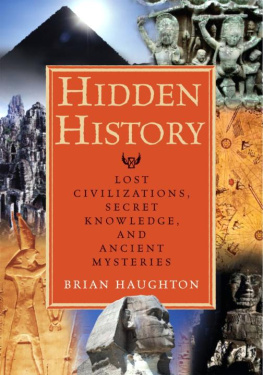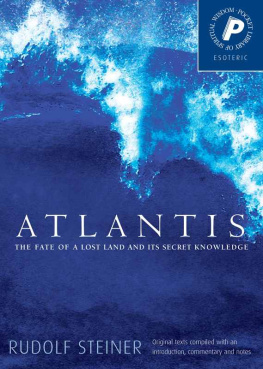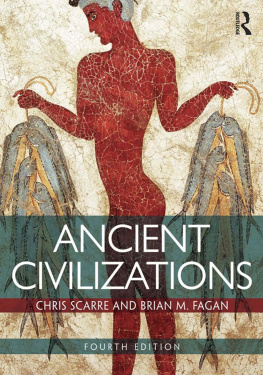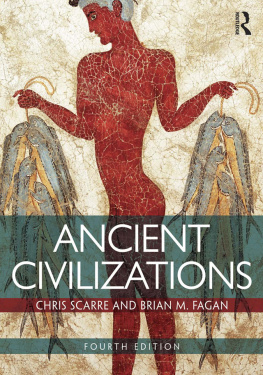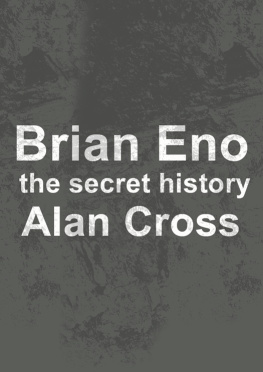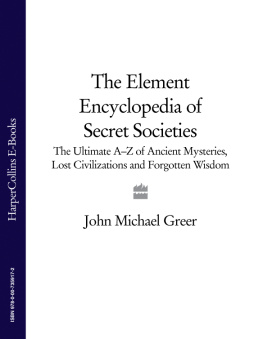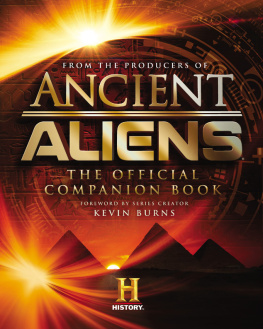





or my mum and dad
Acknowledgments
For help with photographs, I would like to thank Dr. Erich Brenner of the University of Innsbruck, David Hatcher Childress, Carlos A. GomezGallo, Julie Gardiner of Wessex Archaeology, Martin Gray of Sacred Sites, John Griffiths, Paul Haughton, Thanassis Vembos, and Rien van de Weygaert. Many thanks also to Frank Joseph for providing a wonderfully erudite Foreword while going through the traumatizing experience of moving house. Special thanks go to Michael Pye at New Page, and my ever helpful agent Lisa Hagen of Paraview. Finally, I would not have been able to write this book without the encouragement and support of my wife, Dr. A. Siokou, who also read the manuscript.
Blank Page
Contents
................................................... 7
...................................... 13
.................................. 103
..................................... 181
........................ 249
......................................... 257
........................................... 211
Foreword
By Frank Joseph
In response to popular dissatisfaction with mainstream scholars' often inadequate explanations of the world we live in, publishers are fielding a growing number of books posing alternative considerations to prevailing orthodoxy. In confronting official paradigms, their unconventional authors are typically provocative, but usually more imaginative than credible. Brian Haughton differs from his colleagues, because he strives for an accord between evidence accumulated by university-trained scientists and fresh theories postulated by avocational investigators. The result is Hidden History: Lost Civilizations, Secret Knowledge, and Ancient Mysteries. It is a balance of fact and theory written with the old integrity of Roman writers, such as Livy and Cicero, who clearly set out the facts and provided leading interpretations, but invited us to come to our own conclusions. Haughton's readers will find themselves engaged in the same kind of participation that challenges their imagination by expanding it. The cause is self-evident: His is a truly encyclopedic work, dealing with 49 historical enigmas from around the globe. His work spans the deep antiquity of Britain's Stonehenge and Egypt's Great Pyramid to current discoveries
about the Shroud of Turin and the Dead Sea Scrolls. As such, Hidden History is at once a superb introduction to these mysteries for anyone unacquainted with them, as well as a sourcebook eclectic investigators will find indispensable.
Haughton begins with Atlantis, widely considered the greatest enigma of all (and among the most controversial). Merely presenting thumbnail sketches of all the theories used to describe it would require a full-length book in itself. But Haughton deftly sorts out the leading arguments for and against the existence and location of Plato's "lost continent," leaving us less bewildered by the plethora of contending opinions than intrigued by the possibilities for a 21st century discovery. Hidden History does not neglect Atlantis's Pacific counterpart, especially in view of recent discoveries made around the Japanese islands. Under the clear waters of Yonaguni, scuba divers recently found a pyramidal structure sitting nearly a hundred feet below the surface. Could this artificial-looking formation of massive stone be the result of a natural process? Or is it the remains of the lost civilization of Lemuria, also known as Mu, mentioned in the Hindu monastery records of Burma and India?
The inhabitants of both Atlantis and Lemuria were said to have possessed a technology far ahead of the times in which they lived, and Haughton presents physical evidence suggesting the former existence of scientific advances at odds with the period of their invention and use. A foremost specimen includes the so-called Baghdad Battery powered by citrus juices to electro-plate statuettes with gold. Although a simple device, it nonetheless suggests that at least the fundamentals of electricity were understood and applied more than 2,000 years before Thomas Edison switched on the first electric light bulb. Haughton's comparison of the Mayan Calendar with Germany's Nebra Disc and the Antikythera Mechanism (dredged up from the bottom of the Aegean Sea), proves that the ancients were computer literate. The Mayan Calendar is well-known for its ominous prediction of global change (scheduled to occur on the winter solstice of 2012), and Haughton explains in clear language the incredibly high-level mathematics that went into the creation of this unquestionably great scientific achievement. While such sophisticated devices have been known in the West since the Spanish Conquest, 500 years ago, another pre-Industrial Age computer was found just two years ago in northern Germany. Dated to the Late Bronze Age (circa 1500 B.C.), the Nebra Disc is an astronomical clock of sophisticated capabilities and workmanship, far in advance of anything from the same time and place. Its mere existence implies that a higher level of material society flourished in a region far beyond the cultural orbit of the
Greco-Roman World than previously imagined. It predates-by more than 14 centuries-a comparable instrument hauled up in a fisherman's net around the turn of the 20th century off the Greek island of Antikythera. The device is a complex intermeshing of intricate gears that historians formerly believed would not have been possible until the European Renaissance. Apparently, the Classical World had its own Leonardo da Vinci, who fashioned an efficient astronomical computer small enough to be carried aboard ships for purposes of celestial navigation.

